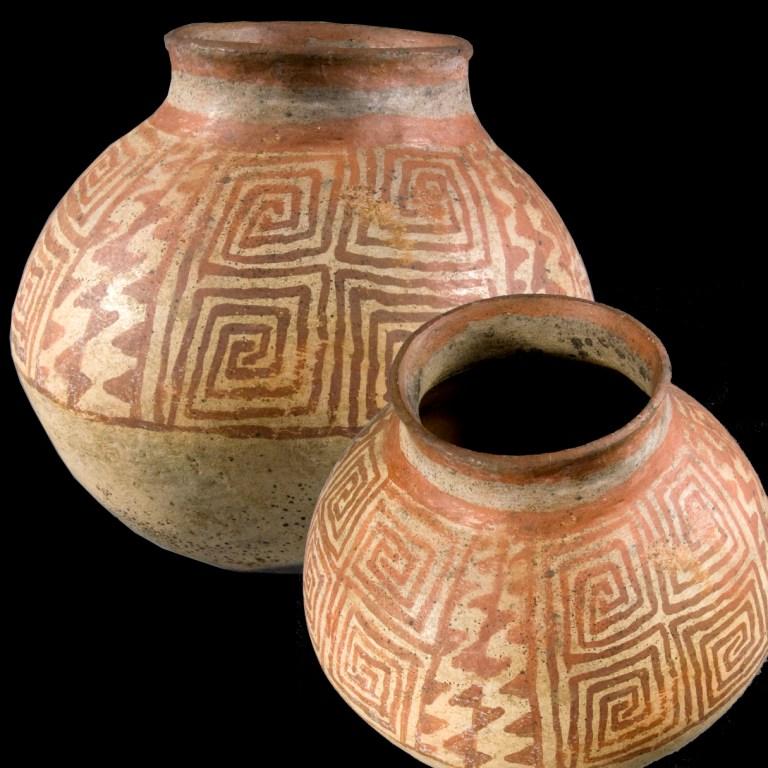Coconino Buff Ware is a pottery type very similar to Hohokam Buff Ware, but geographically limited to several sites in the Walnut Creek drainage below Walnut Canyon National Monument in northern Arizona.
Types include: Coconino Red-on-buff and Winona-red-on-buff.
Archaeological Culture: Sinagua
Date Range: A.D. 1050-1150.
Construction: By paddle and anvil.
Firing: In a oxidizing atmosphere.
Core Color: Black, gray, or buff, tending to brick-red near the outer surface (jars), or brick-red.
Temper: Abundant coarse light-colored angular fragments (gray, white, or buff) (Variety 1), or abundant grains of black volcanic sand (Variety 2).
Surface Finish: Interior surface generally anvil marked and unpolished; exterior surface impacted, sometimes scraped, and frequently wiped. Coconino Red-on-buff is slipped on jar exteriors and bowl interiors, and coated with a thin buff wash on jar interiors and bowl exteriors and wiped.
Surface Color: Buff, cream, darker interior jars (dark gray, buff, or reddish-brown) for Winona Red-on-buff.
Forms: Jars, bowls, censers.
Vessel Thickness: 4.1 to 9.2 mm (jar walls).
Decoration:
- Paint: Iron oxide mineral paint.
- Design: Elements consist of serrated barbs, thin parallel lines, often wavy or jagged; fringe attached to lines; hatching, with the hatching areas often doubly capped with jagged lines; both rectilinear and curvilinear scrolls.
Comparisons: Types of Hohokam Buff Ware all have different temper.
Compiled from the following sources:
Colton, Harold S. (1955) Pottery Types of the Arizona Strip and Adjacent Areas in Utah and Nevada. Museum of Northern Arizona Ceramic Series No. 1. Flagstaff, Arizona
O’Hara, Michael. (1998) Red-on-buff North of the Mogollon Rim: A Comparative Analysis and Cultural Assessment. Masters Thesis. Northern Arizona University. Flagstaff, Arizona.
Compiled by:
April Peters, Northern Arizona University Anthropology Laboratories.

